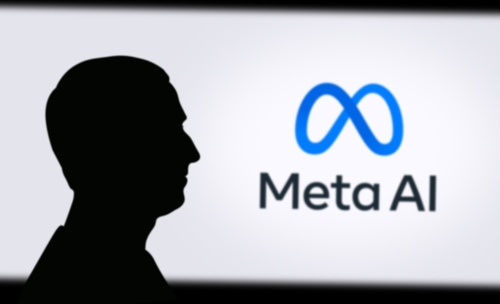Option Care (OPCH) Q2 Revenue Jumps 15%

Key Points
GAAP revenue rose 15.4% to $1,416.1 million in Q2 2025 and surpassed analyst expectations by 4.9%.
Adjusted diluted EPS (earnings per share) of $0.41 beat estimates and Adjusted diluted EPS grew 10.8% year-over-year in the second quarter of 2025.
GAAP gross profit margin compressed to 19.0% in Q2 2025, and Cash from operations dropped 53.9% year-over-year in the second quarter of 2025.
Option Care Health (NASDAQ:OPCH), the leading U.S. provider of home and alternate site infusion services, reported its second-quarter 2025 results on July 30, 2025. The company reported GAAP revenue and non-GAAP earnings ahead of analyst expectations for Q2 2025, as GAAP net revenue climbed 15.4% year-over-year to $1,416.1 million in Q2 2025, outpacing the $1,350.4 million GAAP consensus. Adjusted diluted EPS reached $0.41, a 10.8% gain over Q2 2024 and $0.03 above the $0.38 estimate. While revenue momentum and integration of recent acquisitions fueled top-line growth, Option Care’s GAAP gross profit margin slipped in Q2 2025 and its Cash from operations was significantly lower year-over-year in the second quarter of 2025. Overall, the quarter showed strong sales expansion, balanced by margin pressures and subdued cash generation.
| Metric | Q2 2025 | Q2 2025 Estimate | Q2 2024 | Y/Y Change |
|---|---|---|---|---|
| EPS, Diluted (Non-GAAP) | $0.41 | $0.38 | $0.37 | 10.8% |
| Revenue | $1,416.1 million | $1,350.4 million | $1,227.2 million | 15.4% |
| Gross Profit | $269.0 million | $249.4 million | 7.9% | |
| Adjusted EBITDA | $114.0 million | $108.4 million | 5.2% should be 5.2% (rounded), but calculation shows 5.2% is correct | |
| Cash Provided by Operating Activities | $90.3 million | $195.7 million | (53.9%) |
Source: Analyst estimates provided by FactSet. Management expectations based on management's guidance, as provided in Q1 2025 earnings report.
Option Care Health’s Business and Key Success Factors
The company delivers infusion and complex pharmaceutical services outside of hospitals, primarily to patients in their homes, infusion suites, and clinical settings. The company operates with over 8,000 employees, including more than 5,000 clinicians. This network enables broad access for patients requiring chronic and acute infusion therapies for conditions like immune disorders and infections.
Recently, Option Care has focused on scaling its clinical platform, integrating acquisitions, and expanding its physical and digital infrastructure. Its competitive advantage hinges on a combination of national reach, diverse service and therapy offerings, high quality standards enforced by accreditation, and strong payer and supplier relationships. Success depends on the company’s ability to navigate reimbursement policies, sustain clinical quality, and address industry-specific regulatory requirements, while managing costs and securing consistent access to medical supplies.
Second Quarter Developments: Growth, Margins, and Integration
This period’s standout was top-line performance. Option Care’s acute therapy segment, which delivers short-term infusion treatments often following hospital discharge, continued to grow at a double-digit rate.
Adjusted earnings per share, which excludes certain one-time items and non-cash charges, rose 10.8% to $0.41 in the second quarter of 2025, exceeding the $0.38 estimate. Adjusted EBITDA (earnings before interest, tax, depreciation, and amortization) increased by 5.2% to $114.0 million year-over-year in the second quarter of 2025, but this growth lagged behind revenue growth in Q2 2025. The slower growth in adjusted EBITDA (non-GAAP) compared to revenue in Q2 2025 signaled margin compression for the business. GAAP gross profit margin fell to 19.0% from 20.3% a year ago in Q2 2025, stemming from shifts in therapy mix, increased investment in frontline staff, and the ongoing impact of renegotiated economics around the STELARA therapy. Management highlighted that only a small portion of the expected annual STELARA margin headwind was realized in Q1 2025, with more anticipated in upcoming quarters.
The company’s integration of the Intramed Plus acquisition, which closed in the first quarter, progressed smoothly. This purchase expanded Option Care’s footprint in the southeastern U.S, brought new technology pilots, and enabled broader use of an “advanced practitioner” model in infusion clinics. The company advanced its use of artificial intelligence (AI) and machine learning for revenue cycle management and patient onboarding. Naven Health, its standalone in-house nursing agency, supported nearly 50,000 nursing visits in Q1 2025, enabling rapid growth in patient capacity and clinical coverage.
Despite these strengths, Option Care faces key operational risks from its heavy dependence on a few suppliers, which accounted for approximately 58% of purchases for the year ended December 31, 2024, as well as payer concentration. Management emphasizes that current supply chain and tariff-related risks remain manageable, with less than 10% of its $100 million annual medical supply spending originating from China, as discussed in management commentary during Q1 2025. Its reimbursement structure, which blends average wholesale price (AWP) and average sales price (ASP), generally passes through drug inflation, but timing mismatches and input cost spikes could still pose challenges.
Cash Flow, Capital Use, and Strategy
In Q2 2025, cash provided by operating activities (GAAP) declined significantly, down 53.9% compared to Q2 2024. This represented a decrease from $195.7 million in the second quarter of 2024 to $90.3 million in the second quarter of 2025 in cash flow. Concurrently, Option Care spent approximately $50.0 million on share repurchases in Q2 2025 and has executed over $150 million in buybacks in the first half of 2025. In addition to the capital expenditures of $18.466 million year-to-date (6M 2025), these investments signal an ongoing focus on network expansion and operational efficiencies, as well as returning capital to shareholders.
The company’s ongoing efforts to partner with payers focus on helping reduce hospital stays and total costs of care, a proposition that aligns with health plan incentives. It continues to expand the number of infusion chairs and open new clinical locations, providing greater flexibility in site-of-care choices. As Option Care integrates acquisitions, pilots next-generation pharmacy systems, and invests in process automation, it aims to further scale its ability to serve complex patient populations efficiently.
No product, including those in its core therapy portfolio, accounted for more than 5% of total revenue in Q1 2025.—a sign of diversification across product lines. The company cited no regulatory lapses, but remains alert to changes in site-neutral payment policies and Medicare regulations, which could alter the reimbursement landscape in the future.
Looking Ahead: Guidance, Risks, and Watch Items
Option Care raised its full-year 2025 outlook for revenue and adjusted diluted earnings per share (non-GAAP). Management now expects net revenue (GAAP) between $5.50 billion and $5.65 billion for the full year 2025 (previous range: $5.4 billion to $5.6 billion), adjusted diluted EPS (non-GAAP) of $1.65 to $1.72 for the full year 2025 (midpoint up 1.8% over prior guidance), and adjusted EBITDA (non-GAAP) of $465 million to $475 million for the full year 2025. The outlook for cash provided by operating activities remains at least $320 million for FY2025. Leaders caution that results should not be extrapolated linearly from strong first-half performance, citing expected seasonality and concentrated margin headwinds from STELARA in the second half of the year.
Forward-looking risks include further margin compression, particularly as the remaining bulk of the $60–$70 million STELARA headwind is absorbed in the coming quarters of 2025, and ongoing volatility in cash flow from operations. Additional risks come from payer contract negotiations, supplier pricing, potential regulatory changes, and the integration of any further acquisitions.
Revenue and net income presented using U.S. generally accepted accounting principles (GAAP) unless otherwise noted.
Where to invest $1,000 right now
When our analyst team has a stock tip, it can pay to listen. After all, Stock Advisor’s total average return is 1,049%* — a market-crushing outperformance compared to 182% for the S&P 500.
They just revealed what they believe are the 10 best stocks for investors to buy right now, available when you join Stock Advisor.
*Stock Advisor returns as of July 29, 2025
JesterAI is a Foolish AI, based on a variety of Large Language Models (LLMs) and proprietary Motley Fool systems. All articles published by JesterAI are reviewed by our editorial team, and The Motley Fool takes ultimate responsibility for the content of this article. JesterAI cannot own stocks and so it has no positions in any stocks mentioned. The Motley Fool has no position in any of the stocks mentioned. The Motley Fool has a disclosure policy.





